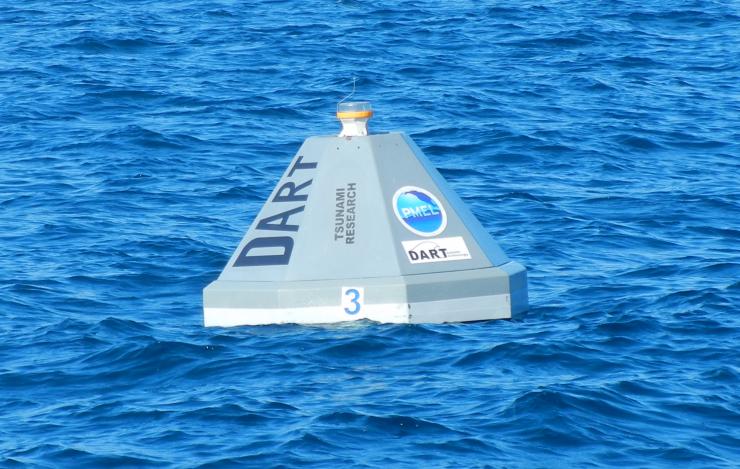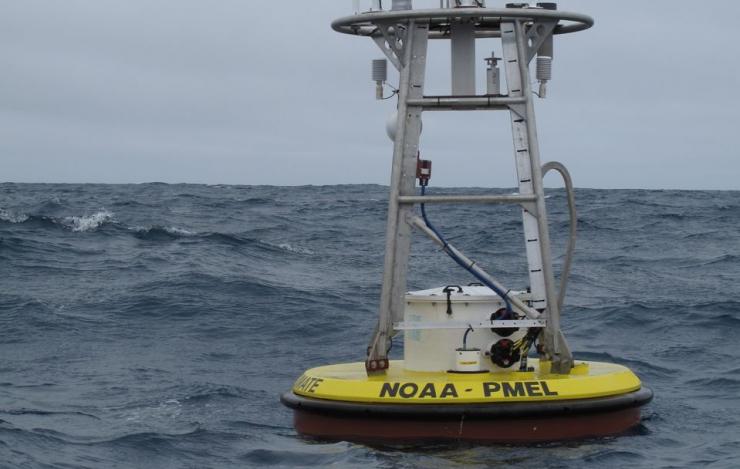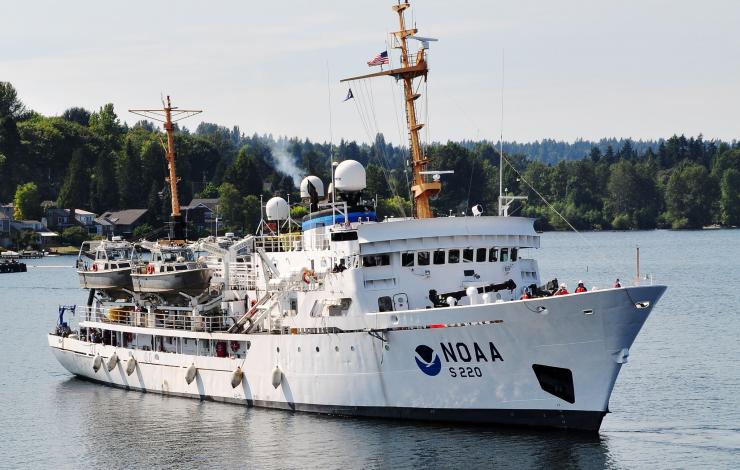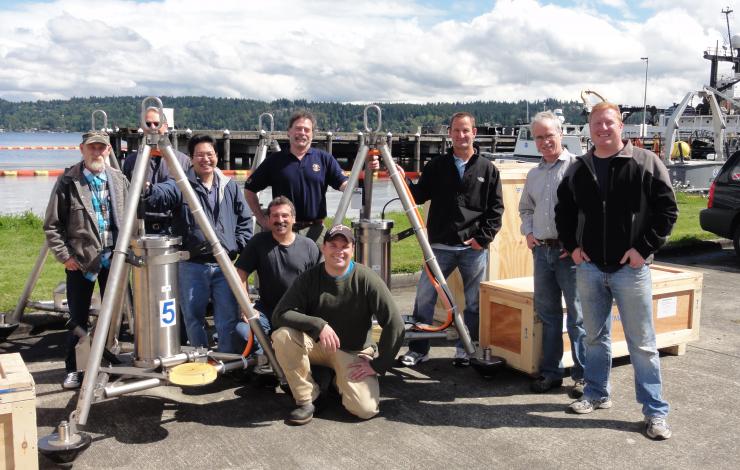What's New Archive
The 2013 North Pole web cams were recovered on September 20, marking the end of another successful season monitoring Arctic conditions. The web cams are part of the North Pole Environmental Observatory, tracking snow cover, weather conditions, and formation/refreeze of melt ponds. The above YouTube video above is a time lapse of images for the period from April - September 2013.
For more information please visit the 2013 North Pole web cam website.
PMEL scientists Drs. Christopher Sabine and Gregory Johnson participated in the final government approval meeting for the Intergovernmental Panel on Climate Change Working Group I Fifth Assessment Report's Summary for Policymakers (SPM) in Stockholm, Sweden during the week of September 23. Delegates and scientists from 110 countries agreed that warming of the climate system is unequivocal and that it is extremely likely (95% confidence) that human influence has been the dominant cause of the observed warming since the mid-20th century.
The final draft of the full Physical Science Basis report to which PMEL’s Drs. James Overland and Richard Feely also contributed will be out soon.
PMEL engineers deployed a Deep-ocean Assessment and Reporting of Tsunamis (DART®) 4th generation monitoring system off the coast of Oregon last week. This system is an enhanced version of the DART®-ETD (Easy to Deploy) technology developed at NOAA-PMEL that incorporates advancements in sensors, software and power management to detect and measure near-field tsunami with unprecedented resolution. An improved pressure sensor will be able to detect and measure a tsunami closer to the earthquake source providing valuable information to warning centers even faster.
Please visit the DART® website for more information on this technology.
On Monday, September 9, the launch of the Wendy Schmidt Ocean Health XPrize was announced. XPrize partnered with NOAA and PMEL to help design the XPrize, a $2M competition for the development of two pH sensors to improve our understanding of ocean acidification and the effects of CO2 emissions on ocean health.
PMEL scientists Drs. Christopher Sabine and Richard Feely will act as members of the Prize Council and as central advisors for the 2-year competition period. Visit the XPrize website for competition entry details and additional information.
Since it began maintaining a mooring station at the Papa site in the Gulf of Alaska in 2007, PMEL’s Ocean Climate Station program has been providing climate and weather observations. In July 2013, Papa became central to the National Science Foundation’s Ocean Observatories Initiative global node with the addition of two more moorings, a nearby profiling mooring, and three gliders at the site.
Visit the Ocean Climate Station Papa website for more information.
The American Meteorological Society released its 2012 State of the Climate report in August that provides annual updates on global climate indicators compiled by 384 scientists from 52 countries. PMEL scientists contributed to 6 articles including updates on the global carbon cycle, ocean heat content, ocean acidification, and Arctic air conditions.
For more information please see the NOAA press release and access the PMEL articles from the publication database.
Scientists from PMEL left for a month-long research cruise in the beginning of August to better understand how the marine ecosystem is responding to changing ocean chemistry along the U.S. West Coast. Scientists aboard the NOAA Ship Fairweather will study the chemistry and biology of the marine ecosystem along 16 transect lines and, for the first time, assess impacts of changing ocean acidification upon this ecosystem in the open ocean.
Please visit the NOAA Ocean Acidification program website for more information, including a cruise blog that will be updated during the month long science expedition.
PMEL and JISAO scientists are tracking Arctic sea ice conditions with animations of images from web cams deployed in springtime at the North Pole by the North Pole Environmental Observatory. Images received on July 15 (seen left) reveal widespread ponds in the sea ice. Although some melt pond formation was observed as early as June 7 on the far horizon, cloudy conditions seen in the animations may have contributed to the late widespread melt pond formation that is only now clearly visible.
For historical sea ice conditions observed by the web cams, see the sea ice transition website.
A newly released report at Oceanography details the work of scientists and engineers with PMEL’s Cooperative Institute for Marine Resources Studies (CIMRS) to analyze the sound of iceberg A52 breaking apart in the Southern Ocean using underwater hydrophones. The authors concluded that sounds measured are significantly greater than anthropogenic noises and should therefore be considered as a major contributor to the overall ocean noise budget.
For more information on PMEL’s Acoustic program please visit their website.
PMEL engineers and JISAO and CIMRS scientists delivered several instruments to the University of Washington during the month of May that will be plugged in to the Regional Scale Nodes cabled observatory at Axial Seamount later this summer. Building on the success of PMEL’s NeMO seafloor observatory PMEL, 5 bottom pressure recording and tilt recorders and 3 time series vent fluid samplers for chemistry and microbiology built at PMEL will be part of the Ocean Observatory Initiative (OOI) cabled observatory program funded by the National Science Foundation.
The instruments will be plugged into the cabled observatory this summer using the ship R/V Thomson and the ROPOS Remotely Operated Vehicle (ROV).






